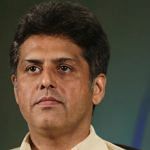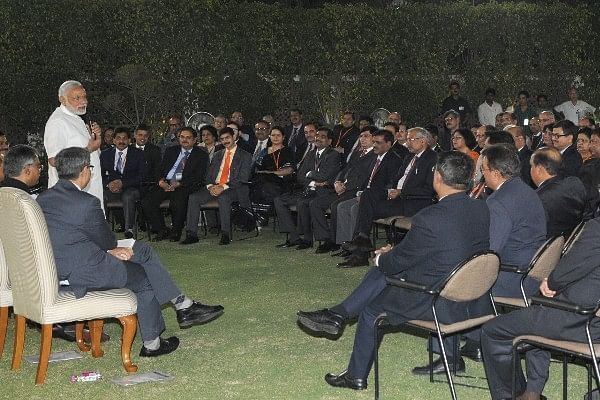Prime Minister Narendra Modi is reaching out to bureaucrats directly to ensure implementation of the government’s flagship programmes. Modi has also introduced a whole host of new measures that put the central and state bureaucracy directly under the watch of the Prime Minister’s Office, virtually side-stepping Union ministers and state governments.
Read more: Red tape be damned, Modi is creating a new bureaucracy tailored to his vision
Question: Is making the bureaucracy directly accountable to the PM a good solution for India’s governance delivery problem? We ask experts.
#
There is now a sense of urgency and fear in the bureaucracy, which is necessary.
 Satyananda Mishra, former chief information commissioner and former secretary of the department of personnel and training.
Satyananda Mishra, former chief information commissioner and former secretary of the department of personnel and training.
This is the first time that a PM is directly talking to joint secretary-level officers. A system of video conferencing with secretaries was installed during the UPA. Unfortunately, it was never used. Under Modi, it is being used intensively.
Modi believes in a direct approach of monitoring implementation. Till 2014, the appointments committee of the cabinet had the Prime Minister, home minister and the concerned minister on board to select all joint secretary-level officers and above. After 2014, the committee only has the PM and HM. The proposal is sent by the committee to the PM, who then approves it and sends it to the HM. The HM has neither the courage nor the capacity to disagree.
Under the UPA, powerful ministers would dictate to us the officer they preferred. So, all IAS officers would make a beeline before ministers, creating a sense of complicity. Modi put an end to it.
At one level, this is not a good thing. After all, allocation of business in the Constitution has been done by creating departments. Ministers are ultimately responsible for the decisions and implementation. “Interference” by the PMO dilutes the engagement of ministers.
Modi is much more impatient than his predecessors. He gets annoyed if things are not moving fast. But the downside is that officers are working till 9 pm everyday with no respite or social life. Either Modi or his office are following up on pet schemes of the government at a micro level. But how much can a joint secretary do? Most government schemes are ultimately implemented by state agencies.
But it must be recognised that it has taken away a lot of casualness from the departments, and ended pointless meetings. There is now a sense of urgency and fear in the bureaucracy, which is necessary.
#
The government has no bench strength and the PM does not have faith in his cabinet colleagues.
 Manish Tewari, spokesperson, Indian National Congress
Manish Tewari, spokesperson, Indian National Congress
While nobody can have a quibble with the Prime Minister for directly talking to the bureaucracy – for that is the implementing arm of the executive – the fundamental question that arises is this: what are the implications if it is at the expanse of undermining the Westminster system of government?
The Westminster system is predicated on the principle that the Prime Minister is only the first among equals and the council of ministers is collectively responsible to Parliament. The Westminster system in no way allows the Prime Minister to arrogate to himself a Presidential halo. Even in the Presidential system, cabinet members are confirmed by the legislative process, thereby ensuring a reasonable degree of checks and balances.
The difficulty with the current NDA/BJP government is that it has no bench strength, and there is a perception that the Prime Minister does not have faith in his cabinet colleagues. Therefore, there has been an enormous centralisation of power in the Prime Minister’s Office. The PMO in turn works with the bureaucracy in different ministries, thereby reducing ministers to being mere figureheads.
A classic example of this is demonetisation. It is still not clear as to whether cabinet had the occasion to discuss it, or it was presented with a fait accompli for post facto approval.
It is therefore worrying when he reaches two or even three levels deep into the innards of the bureaucracy without ministers being present. This demolishes what remains of the Parliamentary form of government.
#
It is a continuation of Modi’s desire to leave his imprint on the country’s fabled ‘steel frame’.
 Milan Vaishnav, senior fellow and director of the South Asia program at the Carnegie Endowment for International Peace
Milan Vaishnav, senior fellow and director of the South Asia program at the Carnegie Endowment for International Peace
The Prime Minister’s effort to forge a direct connection with top bureaucrats is a continuation of his desire to leave his imprint on the country’s fabled ‘steel frame’. On nearly every policy priority of the government, from Swachh Bharat to Make in India to Jan Dhan Yojana, the bureaucracy is where the rubber really hits the road. If Modi wants to achieve the objectives he has set out for ushering in a ‘New India’ by 2022, he is going to have to extract a much higher level of performance from his top ministries and departments.
And yet, there are also downsides to Modi’s approach. For starters, circumventing a minister by connecting directly with his or her subordinates raises questions about the minister’s role. The last thing Modi wants is a large number of ministers who feel marginalised and, thus, face little incentive to maximise their performance.
Second, while Modi’s efforts to increase bureaucratic accountability are laudable, he needs to embed them within a broader institutional framework. For instance, Parliament has dawdled on passing legislation that would protect bureaucrats against politically motivated transfers. Despite judicial prodding, the Centre and most states have balked.
Last but not least, there is a huge amount of data on civil servants’ abilities, training, and performance that could guide postings and promotions. The Modi government’s vaunted ‘360-degree’ evaluation should harness the power of this big data in a way that facilitates lasting change beyond the tenure of any one PM.
#
Indira Gandhi was the last PM to maintain ‘eyeball’ contact with lower-level bureaucrats.
 Omesh Saigal, former chief secretary, Delhi, and former secretary to the Government of India
Omesh Saigal, former chief secretary, Delhi, and former secretary to the Government of India
Facing repeated attacks from all sides – corrupt politicians, media, judiciary, and black sheep in the ranks – the fabled bureaucratic steel frame is severely corroded. The morale of the civil servants couldn’t be lower and that has seriously affected their ability to deliver governance.
In this context, the meeting of Prime Minister Modi with mid-level bureaucrats is surely a step in the right direction. Since the meeting was not to discuss any special issue, the absence of ministers seems in order.
Indira Gandhi was the last PM who maintained ‘eyeball’ contact with lower-level functionaries like district collectors. I saw this during her two visits to Tripura when I was the district magistrate. I can also vouch for the fact that it considerably raises the morale of the bureaucracy.
By all accounts, the meeting went very well. Modi welcomed proposals from the bureaucracy and patiently heard each of them. In the last several years, the complexion of the civil services has severely changed – from being a citadel of people from the arts and social sciences, it is now comprised of IIT engineers, doctors and other professionals. During their service, many have done their MBAs, some even PhDs.
It has been rightly said that the 4,000-plus IAS officers represent the best talent bank of any group of people anywhere in the world. The PM has, hopefully, found a way of harnessing this talent and put it to use for the development of the nation and filling the governance gaps.
#
The plan is to disrupt old orders of succession and make the bureaucracy look towards a new leader.
 Pranab Dhal Samanta, Editor, ThePrint
Pranab Dhal Samanta, Editor, ThePrint
Prime Minister Narendra Modi’s direct engagement model with different levels of bureaucracy flows from the political wisdom that the bureaucrat, not the politician, should be at the frontline of decision-making and implementation.
This immediately makes it possible for the PMO to deal directly with bureaucrats, regardless of ministerial consent. In fact, most state chief ministers operate in a similar way.
But Modi’s pattern of outreach reveals more. It bares a bigger plan to cultivate a like-minded bureaucracy that understands him. And this isn’t about ideology, it is about his way of working and incubating governance methods.
At first, he just addressed the top and base of the pyramid; essentially, secretaries and chief secretaries, which allowed him to also deal directly with state governments without involving CMs.
Then, to deal with the base, the assistant secretary programme to have IAS freshers attached to secretaries in New Delhi was worked out – aimed at imparting the message of a new method before the ‘system’ takes over.
For the middle layer of bureaucracy, the evaluation system was rejigged before any direct interaction. The 360-degree appraisal system, which has many subjective variables, disrupted old calculations based on annual confidential reports by seniors.
Over the next two years, the crop of bureaucrats making it to lower middle level (district magistrates) and senior levels (joint and additional secretaries) were largely selected through this system. By 2017, the time for direct interaction had come.
What goes unnoticed in these events is the careful execution of an underlying plan to disrupt old orders of succession, and make the bureaucracy look towards a new leader.







Prime minister interacting with bureaucracy is not a new thing in India Even Mrs. Gandhi’s many times had such meetings. Rajeev Gandhi had invited even the district level officers in Delhi in a big conference. He was widely criticized by all levels that he is by passing the system.
To interact with the people who deliver RESULTS is certainly a direct approach and it will benefit the country without FAIL. But it is also true that the political system is totally undermined. Now no MLA, MP or Minister have any authority over the officers who are working with them as they are directly in touch with the PMO are controlled by the PMO.
It is too early to conclude whether this system is suitable for India or not but our Constitution is certainly not based on PM us one among equal.. it is definitely based on US Presidential form of government.
Let Modi run the government as he wish as long as it is good for the country and people.